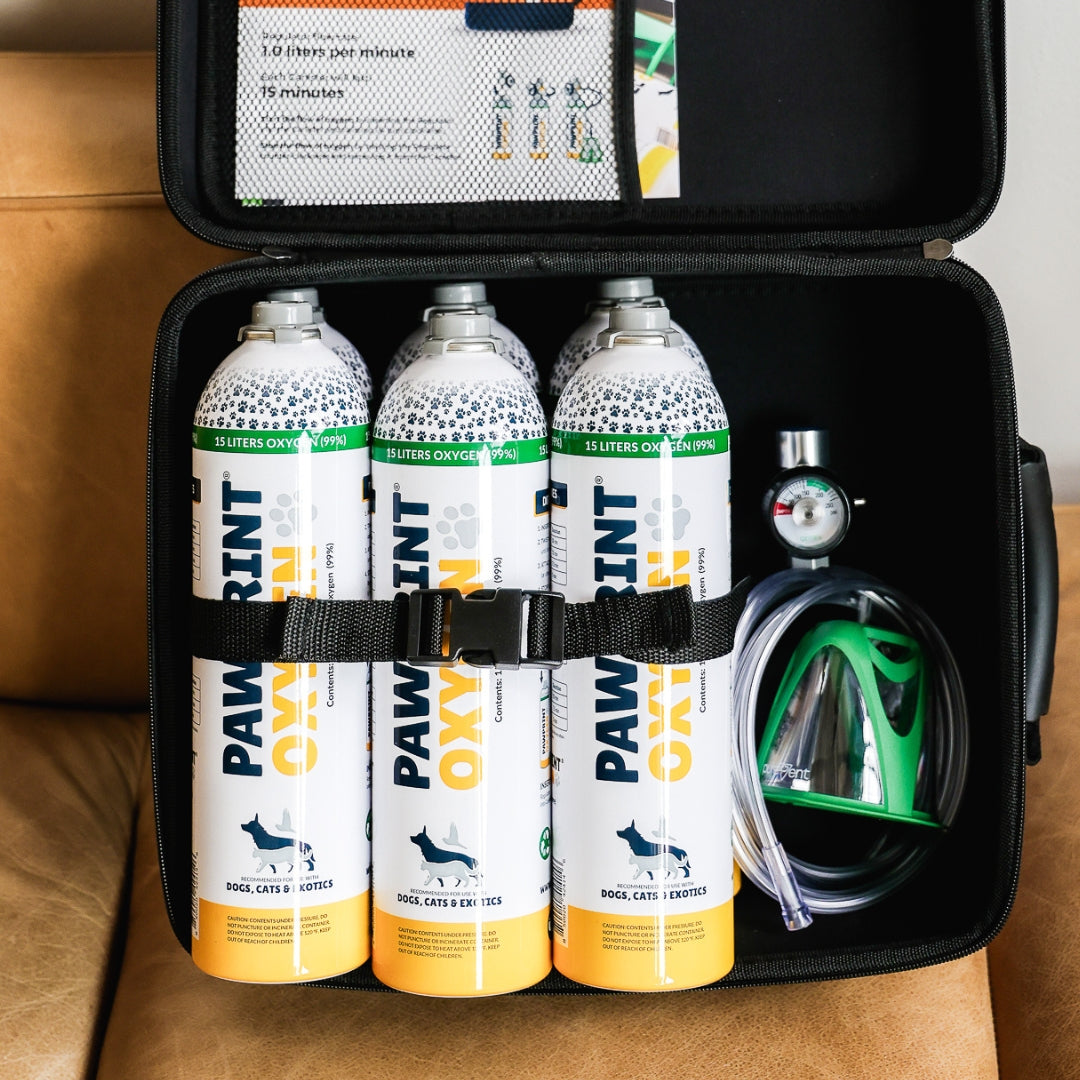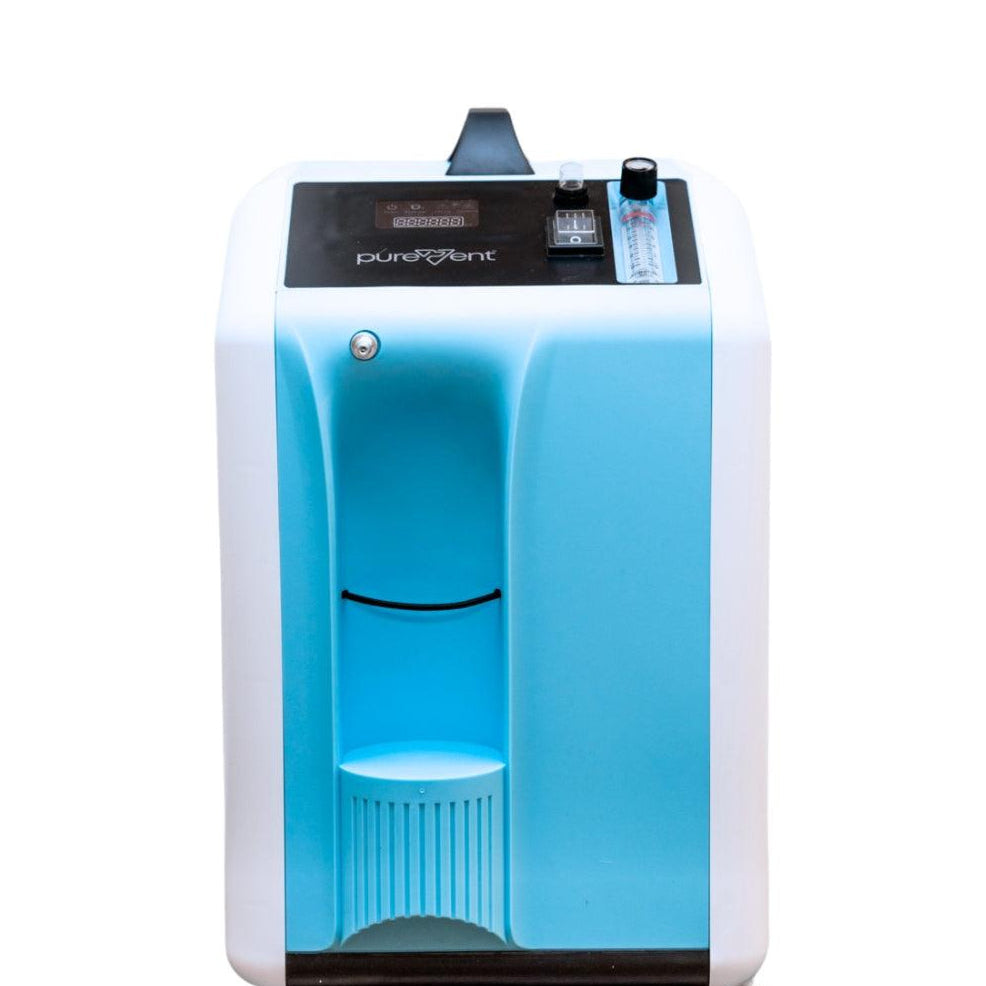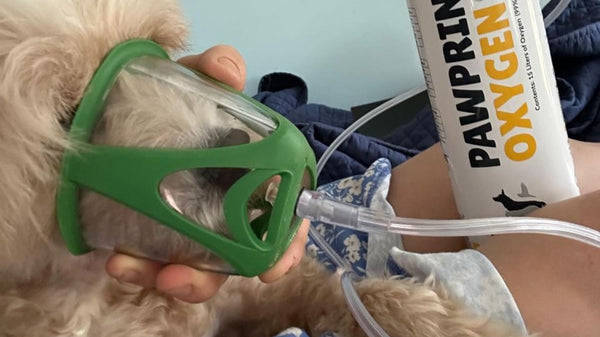Seizures in pets can be a frightening experience for both the pet and their owner. These episodes, which involve sudden, uncontrolled bursts of electrical activity in the brain, can result in a range of symptoms from mild disorientation to full-body convulsions.
Understanding what causes seizures in pets is crucial for providing effective treatment and, in some cases, preventing future episodes. By identifying the root cause, pet owners and veterinarians can work together to develop a management plan tailored to the pet’s specific needs, improving their quality of life and minimizing the risk of further complications.
Table of Contents
Understanding Seizures in Pets
A seizure is a sudden, abnormal burst of electrical activity in the brain that temporarily interrupts normal functioning. These episodes can manifest in various ways, depending on the area of the brain affected and the severity of the electrical disturbance. For pets, seizures are often characterized by changes in behavior, movement, and consciousness, which can be unsettling for their owners.
There are several types of seizures that pets may experience:
- Focal Seizures: Also known as partial seizures, focal seizures are localized to one area of the brain. Pets experiencing a focal seizure may display symptoms such as twitching in a specific body part, abnormal eye movements, or unusual behaviors like snapping at the air.
- Generalized Seizures: These seizures affect both sides of the brain and typically involve the entire body. Symptoms may include loss of consciousness, convulsions, muscle rigidity, and paddling movements of the limbs.
- Grand Mal Seizures: A type of generalized seizure, grand mal seizures are the most dramatic. Pets experiencing this type may collapse, lose consciousness, and exhibit violent muscle contractions that last for several minutes.
Recognizing the signs and symptoms of seizures in pets is essential for prompt intervention. In addition to convulsions or muscle tremors, symptoms may include sudden disorientation, excessive drooling, changes in behavior, temporary blindness, or even loss of bladder or bowel control.
After a seizure, pets may experience a recovery phase known as the post-ictal period, during which they may appear confused, lethargic, or restless. Identifying these signs can help owners respond quickly and seek appropriate veterinary care.

Common Causes of Seizures in Pets
Seizures in pets can have a variety of underlying causes, ranging from genetic factors to environmental triggers. Understanding these causes is essential for developing a treatment plan and reducing the likelihood of future episodes. Below are some of the most common causes of seizures in pets:
-
Epilepsy
- Primary Epilepsy: This form of epilepsy, also known as idiopathic epilepsy, is often hereditary and occurs without any identifiable underlying cause. Certain breeds, such as Beagles, Golden Retrievers, and German Shepherds, are more prone to primary epilepsy due to genetic predisposition.
- Secondary Epilepsy: Unlike primary epilepsy, secondary epilepsy is triggered by an underlying condition, such as a brain injury, tumor, or infection. Treating the underlying issue may help control the frequency and severity of seizures.
-
Infections or Inflammation
- Meningitis or Encephalitis: Inflammation of the brain or spinal cord can lead to seizures, especially in pets with immune-mediated diseases or infections.
- Fungal, Bacterial, or Viral Infections: Conditions such as canine distemper, toxoplasmosis, or fungal infections can trigger neurological disturbances that result in seizures.
-
Toxins
- Ingestion of Household Toxins: Pets are curious by nature, and accidental ingestion of toxic substances like chocolate, pesticides, or human medications can lead to seizures. Even certain seemingly harmless substances, like xylitol or caffeine, can be dangerous.
- Toxic Plants or Chemicals: Some plants, chemicals, or even certain flea and tick preventives can be toxic to pets and induce seizures when ingested or absorbed through the skin.
-
Metabolic Disorders
- Hypoglycemia: Low blood sugar, especially in smaller dog breeds or young puppies, can lead to seizures. Ensuring proper nutrition is vital for maintaining stable glucose levels.
- Liver Disease or Portosystemic Shunt: A poorly functioning liver can lead to toxin buildup in the body, which can affect the brain and trigger seizures.
- Kidney Disease or Electrolyte Imbalances: Kidney failure or imbalances in electrolytes, such as sodium or calcium, can interfere with normal brain function, leading to seizures.
-
Head Trauma
- Whether from a recent injury or past trauma, any damage to the brain can disrupt its normal function and cause seizures. Even seemingly minor injuries can have lasting neurological effects.
-
Tumors
- Brain tumors, whether benign or malignant, can press on areas of the brain responsible for regulating electrical activity. Seizures are a common symptom in pets with brain tumors.
-
Heatstroke
- Exposure to extreme heat can cause a pet’s body temperature to rise to dangerous levels, leading to heatstroke. This condition can cause brain damage, resulting in seizures and other neurological symptoms.
-
Congenital Conditions
- Some pets are born with birth defects or inherited conditions that affect brain development, making them more prone to seizures. These congenital issues may be diagnosed early in life and require ongoing management.
-
Nutritional Deficiencies
- A lack of essential nutrients, such as thiamine (vitamin B1), can lead to neurological problems, including seizures. A balanced diet is crucial for maintaining overall health and preventing deficiency-related issues.
Identifying the cause of seizures in a pet is the first step in developing a targeted and effective treatment plan. Consulting with a veterinarian for diagnostic tests can help pinpoint the root cause and improve outcomes for the affected pet.
Breeds Prone to Seizures
While seizures can affect any pet, certain breeds are genetically predisposed to experiencing them more frequently. Understanding the risks associated with specific breeds can help pet owners be more vigilant and proactive in managing their pet's health.
-
Dogs: Some dog breeds have a higher risk of developing seizures, particularly due to hereditary factors. Breeds prone to seizures include:
- Labrador Retrievers: These popular family pets are unfortunately among breeds with an increased risk of idiopathic epilepsy, which often manifests during their early years.
- Beagles: Known for their high energy and strong sense of smell, Beagles are another breed genetically predisposed to primary epilepsy.
- German Shepherds: German Shepherds, often chosen as working dogs due to their intelligence and loyalty, are also susceptible to seizures, particularly idiopathic epilepsy.
- Border Collies: With their high energy levels and strong work drive, Border Collies are another breed prone to epilepsy.
- Australian Shepherds: This breed has a known genetic predisposition to seizures, particularly idiopathic epilepsy.
In these breeds, epilepsy is often inherited, and owners should be aware of the signs and seek early veterinary intervention if their pet shows symptoms of seizures.
-
Cats: Seizures are less common in cats than in dogs, but they can still occur, especially in certain breeds with a genetic predisposition. Among cats, the following breed is known to be at higher risk:
- Siamese: While less frequent than in dogs, Siamese cats may be more prone to experiencing seizures compared to other breeds, though the causes are often less understood.
Though the genetic link is not as well-researched in cats as in dogs, any breed of cat can potentially develop seizures due to factors like trauma, infection, or toxins. Regardless of the breed, early detection and diagnosis are key to managing seizures effectively.
Recognizing an Emergency
A single, short seizure that lasts less than a minute may not always require an emergency trip to the vet, but certain situations should prompt immediate action. One commonly followed guideline is the Rule of Three:
- If your pet has more than three seizures within a 24-hour period.
- If a single seizure lasts longer than three minutes.
- If your pet experiences three seizures or more per month, even if brief.
Recognizing when a seizure in your pet requires immediate veterinary attention is crucial for their safety and well-being. While some seizures may be brief and not life-threatening, others can signal a more serious underlying issue or become dangerous if left untreated.
Seizures that exceed the three-minute mark can lead to severe complications, including hyperthermia (dangerously high body temperature) and permanent brain damage. Additionally, seizures that occur in rapid succession without your pet fully regaining consciousness in between, known as status epilepticus, are life-threatening and demand immediate emergency veterinary care.

Importance of Documenting Seizure Episodes
Keeping a detailed record of your pet’s seizures is an essential part of managing the condition. Documenting the duration, frequency, and typeof seizures helps your veterinarian understand the pattern and potential triggers of your pet’s episodes. Important information to note includes:
- Duration: Record the start and end time of each seizure. Even brief seizures can escalate, so noting the length of each episode helps track progression.
- Frequency: Document how often your pet experiences seizures, whether they occur sporadically or with increasing regularity.
- Type: Describe the nature of the seizure, such as whether it was focal (affecting a specific body part) or generalized (involving the entire body), as well as any unique behaviors or signs before, during, and after the episode.
This information will assist your veterinarian in diagnosing the underlying cause of the seizures and determining the best course of treatment. In some cases, your vet may recommend additional diagnostic tests or refer you to a veterinary neurologist for specialized care. Taking proactive steps by seeking veterinary care at the right time can make a significant difference in your pet’s quality of life and long-term health.
What is a seizure?
A seizure is a temporary episode of abnormal electrical activity in the brain that causes a variety of symptoms, like loss of consciousness, uncontrollable movements, and difficulty breathing.
How do I know if my pet is having a seizure?
Recognizing a seizure can be challenging, especially if you've never seen one before. Some signs that may indicate your pet is having a seizure include uncontrollable muscle movements, loss of consciousness, collapse, excessive drooling, loss of bladder or bowel control, and repeated movements or actions.
What should I avoid doing if my pet is having a seizure?
It's essential to avoid certain actions to ensure both your pet's safety and your own. Here are a few things NOT to do if your pet is seizing: Do not put your hands near your pet's mouth. Do not try to restrain your pet or move them unnecessarily. Do not give them food or medications until they are conscious. Do not shout or make loud noises. Do not panic.
Diagnosing Seizures in Pets
Diagnosing the cause of seizures in pets can be a complex process, requiring the use of several veterinary diagnostic tools to pinpoint the underlying issue. The goal is to determine whether the seizures are related to a condition like epilepsy or are being triggered by an underlying illness, injury, or toxin. Your veterinarian will perform a series of tests to gather as much information as possible to guide treatment.
Veterinary Diagnostic Tools
When a pet presents with seizures, the first step is typically a thorough physical examination, followed by diagnostic testing to help identify or rule out specific causes. Common diagnostic tools include:
- Blood Tests: Routine bloodwork can provide essential information about your pet's overall health. Blood tests help check for metabolic disorders, liver or kidney disease, electrolyte imbalances, infections, and other systemic conditions that could be causing seizures.
- Imaging (MRI/CT scans): Advanced imaging techniques such as Magnetic Resonance Imaging (MRI) or Computed Tomography (CT) scans allow veterinarians to examine the brain and detect abnormalities like tumors, lesions, or structural changes. These imaging tests are often recommended if seizures are suspected to be linked to brain damage, trauma, or cancer.
- Cerebrospinal Fluid (CSF) Analysis: This test involves collecting a small sample of the fluid surrounding the brain and spinal cord. Analyzing this fluid can help identify infections (e.g., meningitis or encephalitis), inflammation, or immune-mediated conditions affecting the nervous system.
Steps in Diagnosing Underlying Causes for Seizures in Pets
1. Rule Out Infections: Blood tests, CSF analysis, and sometimes cultures or specific tests for infectious agents (like distemper, toxoplasmosis, or fungal infections) are used to determine if an infection is affecting your pet’s nervous system.
2. Check for Tumors or Structural Abnormalities: Imaging techniques like MRI or CT scans help detect brain tumors, lesions, or congenital malformations that could be triggering seizures. This is especially important for older pets or those with a history of trauma.
3. Toxin Screening: If there is suspicion that the pet may have ingested a toxin (e.g., household chemicals, plants, medications), veterinarians will use blood tests or even toxicology screens to rule out poisoning.
4. Evaluate for Metabolic Disorders: Blood tests are key in diagnosing issues like hypoglycemia, liver disease, or kidney failure that could be contributing to seizures. Identifying these disorders is crucial, as they can often be managed with proper medical treatment.
By following a structured diagnostic process, veterinarians can narrow down the possible causes and create a treatment plan tailored to your pet’s specific needs. Early detection and diagnosis play a critical role in managing seizures and improving your pet’s quality of life.
Treatment Options for Seizures in Pets
Once the underlying cause of seizures in pets is identified, treatment can begin to help control and reduce the frequency of these episodes. Treatment options vary depending on the cause, severity, and frequency of the seizures, as well as the pet’s overall health. Below are some of the most common approaches used to manage seizures in pets:
Anticonvulsant Medications for Seizures in Pets
The cornerstone of seizure management is the use of anticonvulsant medications that help regulate brain activity and prevent seizures. Common medications include:
- Phenobarbital: One of the most widely prescribed anticonvulsants for pets, phenobarbital is often the first line of treatment. It helps to control seizure activity by stabilizing neurons in the brain. Regular monitoring of blood levels is important to ensure its effectiveness and to avoid potential side effects, such as liver damage.
- Potassium Bromide: Often used as an alternative or in combination with phenobarbital, potassium bromide is particularly helpful for pets that don’t respond well to other anticonvulsants or for long-term management.
- Levetiracetam (Keppra): A newer option in anticonvulsant therapy, levetiracetam has fewer side effects and is often prescribed in conjunction with other medications.
- Zonisamide: Another option for pets that cannot tolerate phenobarbital or potassium bromide, zonisamide is used to manage seizures with relatively mild side effects.
Adjusting dosages and monitoring side effects are essential components of anticonvulsant therapy, and many pets require long-term or lifelong management with these medications.
Tumor Removal or Surgical Interventions for Seizures in Pets
If the seizures are caused by a brain tumor or other structural abnormalities, surgery may be a viable option. Tumor removal or the reduction of pressure on certain parts of the brain can alleviate the cause of seizures in some pets. Though surgery is a more invasive option, it can be crucial and may dramatically reduce or eliminate seizures when the root cause is treatable through surgical intervention.
Dietary Management for Seizures in Pets
For pets with epilepsy, dietary adjustments may complement medical treatment and help reduce seizure frequency. One option is the ketogenic diet, which is high in fats and low in carbohydrates. This diet is thought to help stabilize brain activity by altering the body’s metabolism and reducing the brain’s reliance on glucose, which can sometimes contribute to seizures. Some prescription diets are also formulated specifically for pets with epilepsy, providing optimal nutrition to support brain function.
Holistic and Supportive Care for Seizures in Pets
In addition to conventional treatments, many pet owners explore holistic and supportive therapies to help manage their pet’s seizures. While these approaches may not cure seizures, they can offer additional relief and improve a pet’s overall well-being:
- Acupuncture: This ancient practice involves inserting thin needles into specific points on the body to promote healing and balance. Some pet owners report that acupuncture has helped reduce seizure frequency or intensity in their pets by promoting better neurological health.
- CBD Oil: Cannabidiol (CBD) oil is gaining popularity for its potential role in reducing seizures, particularly in pets with drug-resistant epilepsy. While research is still ongoing, some studies suggest that CBD can have anticonvulsant properties and help manage seizures without the side effects of traditional medications.
- Oxygen Therapy: Providing supplemental oxygen during or after a seizure can help minimize brain damage, reduce recovery time, and prevent complications related to oxygen deprivation during extended seizures. Oxygen therapy is especially helpful for pets experiencing cluster seizures or status epilepticus.
- Stress Reduction Techniques: Stress can be a trigger for seizures in some pets. Implementing stress reduction techniques, such as creating a calm and stable environment, using pheromone diffusers, and incorporating relaxation exercises, can help minimize the occurrence of seizures.
Each pet’s response to treatment is unique, and many pets benefit from a combination of these options to achieve the best possible outcome. Regular communication with a veterinarian is essential to adjust treatments as needed and ensure that seizures are effectively managed.

Preventing Seizures in Pets
While not all seizures in pets can be fully prevented, especially in cases of genetic epilepsy, there are several steps pet owners can take to minimize the risk and frequency of seizures. Prevention efforts typically focus on managing underlying health conditions, reducing exposure to potential triggers, and ensuring regular veterinary care.
Managing Underlying Health Conditions
Keeping your pet’s existing health issues under control is one of the most effective ways to reduce the risk of seizures. For pets with conditions such as liver disease, kidney disease, or diabetes, following a strict management plan can help avoid the metabolic imbalances that can lead to seizures.
Administering prescribed medications, maintaining a proper diet, and monitoring for any signs of changes in your pet’s condition are crucial for preventing complications that could trigger seizures. In pets diagnosed with epilepsy, consistent use of anticonvulsant medications and routine follow-up with your veterinarian are key to controlling seizure activity.
Reducing Exposure to Toxins Toxins are a common cause of seizures in pets, so reducing your pet’s exposure to potentially harmful substances is essential. Some key ways to prevent toxin exposure include:
- Pet-Proofing Your Home: Ensure that household items like chocolate, medications, cleaning products, and pest control substances are kept out of reach of your pet. Certain plants, such as lilies and sago palms, should also be kept away from pets, as they can be toxic if ingested.
- Avoiding Harmful Foods and Substances: Educate yourself on foods and substances that are toxic to pets. For example, xylitol (a sweetener found in many sugar-free products), certain essential oils, and alcohol can all cause seizures and other serious health issues.
- Monitoring Outdoor Time: Be mindful of outdoor hazards like pesticides, herbicides, and rodenticides, which can be ingested or absorbed through the skin, leading to seizures. Regularly inspect your pet’s environment and keep them away from areas treated with chemicals.
Regular Veterinary Check-Ups for Early Detection
Regular veterinary visits play a vital role in early detection and management of conditions that could lead to seizures. During routine check-ups, your veterinarian can perform blood tests and other diagnostic procedures to monitor for any changes in your pet’s health. Early detection of liver disease, kidney dysfunction, infections, or other conditions allows for prompt treatment, reducing the likelihood of seizures developing as a complication. For pets with a known risk of seizures, veterinarians can provide ongoing advice on managing the condition and recommend adjustments to treatment plans as needed.
By staying proactive with your pet’s health care and minimizing exposure to potential seizure triggers, you can help prevent seizures and improve your pet’s overall well-being.
Support Your Pet with Ongoing Care
Seizures in pets can be alarming, but with early detection and ongoing management, their impact can be significantly reduced. Understanding the potential causes, recognizing the signs, and seeking timely veterinary care are essential steps in ensuring the best possible outcome for your pet. By working closely with your veterinarian to develop a tailored treatment plan, you can help control seizures and improve your pet’s quality of life.
It’s important to remember that many pets with seizures go on to live happy, fulfilling lives with the right care and support. Whether through medications, lifestyle adjustments, or holistic treatments, managing seizures is entirely possible. With vigilant care and a strong support system, your pet can continue to thrive, even in the face of this challenge.






















